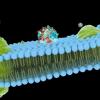Hi daouda,
I really don't want to talk about res on this thread but I think you need to visit the resveratrol forum regarding resveratrol questions and get you up to speed, specially the 500 Club thread, since I clearly fall in to that category:
http://www.longecity...ratrol-per-day/My information:
======================================================================
Name: Anthony Loera (Yes that is my real name!)
Occupation: Office worker (mostly in front of computer)
Residence: Miami, mostly hot year round.
Age: 40 (Will be 41 in August)
Weight: 190lbs (I actually went up when drinking the OO, Maybe it will go down when I am not)
My Health Tests Before C60 (Biophysical 250:
They are posted here) I can get ya a discount on one, if you want it.
My Health Tests After C60 TBD after I think something is really happening...
C60 Dose: (130mg - 150mg Daily in OO) about 4/5 a cup of OO daiily (or 12.8 tablespoons daily)
Time frame: 7 days so far (I figure I would now try once a week per the Baati study, but may try a second week daily doses again)
Smoke? Never, unless its a Cuban and only on a special occasion (So far only about 4 cubans in my life)
Drink? Occasionally. But I don't like beer too much, I prefer Pinot Grigio, Don Julio 1942, Wine, Whiskey Sour, Margaritas, Bloody Marys.
Exercise? Rarely, I am trying... but I would say I can't nail down a regular schedule.
Max Bench Press: 170lbs, at least that was before C60. I suppose I should work out on weights to see if this increases after C60.
Hair: Black, and It looks good, but I do notice a light receding. If hair grows in the small receding areas, I will definitely know it. I see no changes with C60.
======================================================================
Possible effects noticed:
======================================================================
Personal Caveat: I would say these might be placebo at this time... give me a few weeks before I can say otherwise.
- Increased Sex Drive?
I am not sure if it's an increase in sex drive, or a change in perception of previous females
that I wasn't attracted to prior to C60 (ie. Jennifer Anniston) I have ALWAYS thought she was
so darn plain, and maybe she still is. Do I think she is as attractive as say....
a young Sade, Jennifer Connely, or Adriana Lima? Nope, but my perception has changed recently.
- Better skin?
It looks like my skin pores are smaller after using it topically. Again, this is debatable.
- Reduction in stress?
A couple things happened toward the last part of my treatment, which normally would have me
pulling my hair out, losing sleep, etc... it didn't happen. I actually was pretty calm, during it all.
Which surprised the heck out of me.
======================================================================
Ok, I think I have established some personal data that we can compare again, in the future.
Cheers
A



















































